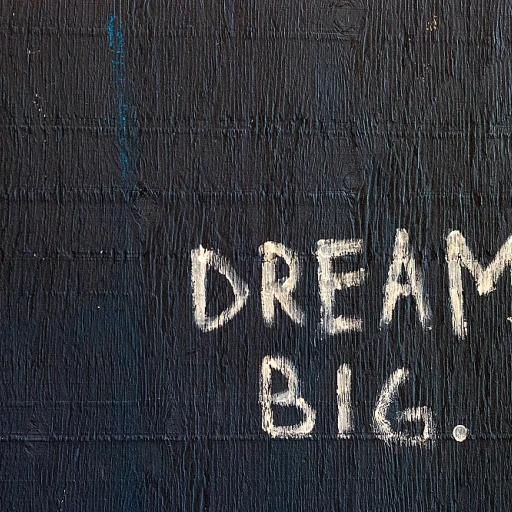Understanding Ageism: A Silent Workplace Challenge
Age Discrimination: Unveiling the Hidden Barrier
Ageism, a term that's become increasingly prevalent in discussions about workplace dynamics, represents a form of discrimination people often overlook until they encounter its effects firsthand. Although subtle in its manifestation, ageism can create a harmful environment for both older employees and younger workers alike. This type of discrimination stems from preconceived notions about the capabilities of individuals based on their age.
As employees shift towards remote work environments, it's crucial for organizations to reassess how they perceive and treat their workforce. Often, older workers find themselves sidelined during hiring processes, not because of their skills, but due to biases about their adaptability or technological skills. On the other hand, younger employees may face skepticism about their experience or leadership potential.
Understanding the nuances of age discrimination in the workplace is more than just recognizing overt acts—it's about rightly identifying and addressing the subtle slights and assumptions that reinforce ageism workplace culture. Recognizing these signs is the first step towards fostering an inclusive environment where all employees, regardless of their age, can thrive and contribute.
Identifying Subtle Signs of Ageism
Spotting Disguised Discrimination at Work
In many companies, ageism can be a silent undercurrent, subtly influencing decisions and interactions. Identifying these signs of age discrimination can be challenging, as they often blend into everyday workplace dynamics. However, understanding these nuances is crucial for both older and younger workers who might face different forms of bias.
Here are some examples of the subtle signs of ageism in a workplace setting:
- Exclusion from Projects: Older employees may find themselves passed over for significant projects or leadership roles, favoring younger workers under the assumption that they bring more 'fresh' ideas.
- Lack of Professional Development Opportunities: Employers may offer fewer training or advancement opportunities to older adults, assuming they are closer to retirement and less deserving of investment.
- Communicative Bias: When conversations consistently lean towards younger employees, or when language implies that older workers are out of touch, it can signal age bias.
- Praise and Feedback Discrepancies: If younger employees receive more frequent recognition or constructive feedback, it could be an indicator of discrimination based on age.
- Hiring Preferences: A company that regularly favors younger employees during recruitment might be creating an uneven playing field for older applicants.
Ageism in the workplace can significantly impact employee morale and productivity, making it essential to recognize these subtle cues early. Older workers, unfairly overlooked, can experience diminished motivation and reduced job satisfaction. By raising awareness about these discrimination examples, we can promote a healthier, more inclusive work environment for all ages. Such prevention not only benefits the individuals affected but can enhance overall company performance by fostering a more diverse and experienced workforce.
For those seeking support or encountering these signs age regularly, consulting employment law professionals can offer guidance on addressing these issues effectively. It is also beneficial to educate both employers and employees on respecting diverse employees ages, ensuring no one is disadvantaged simply due to their stage in life.
To discover more about creating inclusive workplaces that value every age group, consider exploring opportunities at companies embracing age diversity. Recognizing ageism and taking action is a collective responsibility, essential for cultivating a fair employment landscape.
Overt Examples of Ageism
Recognizable Acts of Ageism in Professional Settings
While ageism in the workplace might initially appear subtle, there are overt, undeniable instances where this form of discrimination rears its ugly head. These clear examples of age-based bias demonstrate the significant challenges older employees face, often impacting their job security and overall satisfaction within a company.
- Promotion Preferences: Overt signs can include situations where older workers are consistently overlooked in favor of younger employees when promotions are being decided. This example of discrimination can be particularly demoralizing for older workers eager to advance or take on more responsibilities.
- Unjust Job Terminations: In some cases, older employees might experience abrupt employment termination without valid reasons, particularly if the organization is veering towards a 'younger work culture.' This practice can lead to allegations of age discrimination, as these older individuals might possess the experience and skills still valuable to the company.
- Comments and Stereotypes: Blatant examples of ageism sometimes manifest in ageist remarks, whether intentional or not. Commenting on an older worker's capacity to embrace new technologies or assuming they'll retire soon perpetuates age bias. Such comments contribute to a toxic work atmosphere, diminishing morale and affecting productivity.
- Training Opportunities: Disparities in training allocations can also demonstrate age discrimination. If training programs and professional development opportunities are predominantly focused on younger employees, older employees may feel sidelined, affecting their performance and commitment to the organization.
Employers must recognize these examples and strive towards creating an inclusive workplace free from age bias. Adhering to employment law is crucial, but more importantly, fostering an environment where workers of all ages can thrive benefits everyone involved. For those employers wanting to delve deeper into HR data management to help prevent ageism workplace issues, exploring the DST Member Portal for HR data management could offer valuable insights.
Impact of Ageism on Employee Morale and Productivity
The Ripple Effects of Ageism on Workplace Dynamics
Ageism is more than just an ethical issue within organizations; it can have profound effects on employee morale and productivity. When older employees and younger workers alike face discrimination based on age, it inevitably leads to a decrease in overall workplace satisfaction and effectiveness.
A discrimination workplace can manifest in various ways, affecting employees' ages across the spectrum. For instance, younger employees might be overlooked for leadership roles due to perceived inexperience, while older workers may face bias, being deemed less adaptable or efficient with technology.
This age-based discrimination doesn't just harm the individuals involved; it impacts the entire team's dynamics. Feeling undervalued can lead employees to become disengaged, which is detrimental to company productivity. According to a survey on ageism, a disengaged workforce can result in wasted resources and increased turnover, leading to higher costs for employers to recruit and train replacements.
Your organization might also be at risk of legal implications related to age discrimination. Laws such as the employment law address and provide protections against age discrimination. It's essential for companies to acknowledge these potential risks as ageism affects not only employee morale but also their financial stability if taken to court.
Moreover, productivity isn't solely measured by outputs; it also relates to innovation and collaboration within the workplace. If ageism creates divides between older adults and younger employees, it hinders employees of all ages from sharing diverse perspectives that can foster creativity and problem-solving.
Combating this requires a conscious effort to create an inclusive environment where all employees feel valued, irrespective of age. Implementing employment policies that highlight diversity and inclusion can mitigate the adverse effects of ageism and ultimately lead to a more harmonious and productive workplace.
Legal Framework and Protections Against Ageism
Understanding the Legal Protections
Discrimination based on age is not only unfair, but it's also illegal under various employment laws. These laws provide a crucial framework for protecting older workers and ensuring a fair and equitable workplace environment for employees of all ages.- The Age Discrimination in Employment Act (ADEA): One of the most significant legal protections in the U.S. against ageism is the ADEA, which prohibits employment discrimination against people aged 40 and older. The act covers aspects such as hiring, promotions, compensation, and terms of employment.
- State and Local Laws: In addition to federal laws, various states and localities have their own laws concerning age discrimination, which sometimes provide broader coverage than federal law. It's important for employers to be familiar with the specific regulations applicable in their region.
- Equal Employment Opportunity Commission (EEOC): The EEOC enforces the ADEA and offers protection against discrimination at the workplace. Employees who experience ageism can file a charge with the EEOC as a step towards seeking redressal.
How Employers Can Stay Compliant
To mitigate age discrimination in the workplace, employers can adopt several strategies, ensuring compliance with current legal standards while promoting an inclusive work environment:- Regular Training: Educating your workforce about ageism and other forms of workplace discrimination is critical. Implement training programs that highlight examples ageism and encourage mutual respect among employees ages.
- Revising Employment Policies: Employers should periodically review and update their employment practices and policies. Ensuring these policies do not disproportionately affect older employees or favor younger workers can help prevent age bias.
- Diverse Hiring Practices: Foster a hiring process that evaluates candidates based on skills and qualifications rather than age. Implementing unbiased recruitment strategies can minimize potential discrimination during the hiring process.
Strategies for Combating Ageism in the Workplace
Addressing Age Bias: Crafting an Inclusive Strategy
To effectively combat ageism in the workplace, organizations must employ a holistic approach that targets various levels of age-related discrimination. Here are recommended strategies for tackling ageist practices and nurturing an inclusive environment for employees of all ages:- Develop and Implement Anti-Discrimination Policies: Establishing clear policies against age discrimination is crucial. The policy should articulate zero tolerance for any form of age bias, and outline the procedures for addressing grievances related to ageism.
- Promote Age Diversity Awareness: Educate both managers and employees on the value of age diversity. Workshops and training sessions can highlight the experience older workers bring and the fresh perspectives younger workers offer, crafting a balance in the workforce.
- Encourage Cross-Generational Mentorship: Foster a mentorship program that pairs older employees with younger ones. This can help break down age-related stereotypes, facilitate knowledge transfer, and create a sense of camaraderie among workers of different generations.
- Flexible Work Arrangements: Consider flexible work options such as part-time roles or telecommuting to cater to the diverse needs of older adults and younger employees. This approach can enhance job satisfaction and productivity.
- Regular Age Audit: Conducting audits to assess age representation within teams can prevent discrimination in employment. Use these audits to inform hiring, promotion, and training practices.
- Celebrate Milestones and Achievements: Recognize and honor the contributions of employees across all ages. Celebrating milestones can dispel myths about age, making every employee feel valued and seen.







